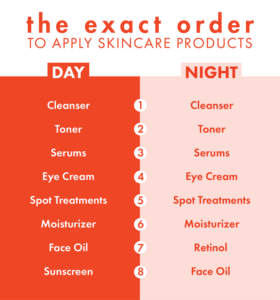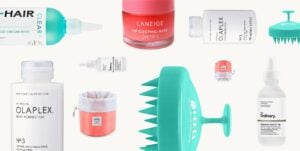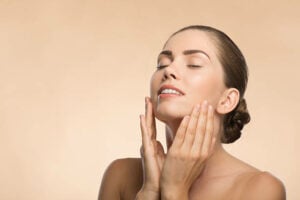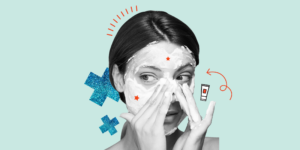Beauty is skin deep. It’s an old saying but it’s true. Take care of your skin and you will look better, feel better, and be healthier too. Skincare isn’t just about using the right products though; there are many ways to take care of your skin on a daily basis that don’t involve buying anything at all. We will look at some tips for layering skincare so you can create a routine tailored to your needs.
But first…
Keep in mind that you don’t need an eight-step skin care program (or even a seven- or six-step one). Most skin types benefit from using fewer products, so if you’re just starting out, stick to the basics: cleanser, moisturizer, and sunscreen. That is all there is to it.
That said, many people have questions when it comes to skincare products: When to use sunscreen in a skincare routine? Can I apply night cream after toner? Do I put on acne cream before moisturizer? Oil or moisturizer first? If you are one of those people, read on for answers.

Step 1: Cleanser
Before applying your products, kindly remove your makeup and cleanse your face. Clean skin that is free of oil and filth is required for ingredients to absorb properly.
Choose a daily facial cleanser and wash your face with it every day before applying any other skincare products. Wash in circular motions to get rid of makeup, dirt, and oil build-up from the day’s activities to give ingredients an easy path into the skin. Instead of make-up wipes that leave residue on your skin, opt for a cleansing oil that dissolves makeup without stripping your skin.
Step 2: Toner
Face toners were once these dreadful, alcohol-based concoctions that hurt your skin and left you stinging. Today’s (excellent) toners, on the other hand, are packed with either gentle, moisturizing ingredients for dry skin or chemical exfoliants for acne and bumps. Toner, like the majority of the processes on this list, is completely optional.
Here’s how to get the best toner for your skin type:
Opt for a toner that contains BHA (beta hydroxy acid, such as salicylic acid) or AHA (alpha hydroxy acid, such as glycolic acid or lactic acid), which clears pores, minimizes breakouts, and eliminates blackheads gradually. If you have dry skin, use AHAs, and if you have oily skin, use BHAs.
After using a cleanser, tap the toner over clean dry skin. Do this every morning or every night, then wait for 5 minutes until it’s dry if you’re applying anything else. For any other skin type, use a hydrating toner. It helps you replenish water lost when washing and drying your face.
Step 3: Serum
Serums are basically concentrated doses of hydrators, nutrients, and antioxidants that immediately improve the health of your skin after application. People tend to ignore them, but they’re the backbone of your skincare routine. Although serums are completely optional, they’re generally a great place to start when it comes to improving your skincare routine and improving your skin’s health.
Some may wonder when to apply face serum? In the morning, use vitamin C serum to protect your skin from the damage and inflammation caused by the environment. It also lightens dark spots and brightens the skin. At night, go for a serum that has hyaluronic acid. It pulls water from the air into your skin and keeps it hydrated as you sleep.
Step 4: Eye Cream
Because eye creams are lighter and thinner compared to face moisturizers, use them first before applying your creams and oils. Since thinner products cannot penetrate thicker products, the general rule when using skincare is to start with the lightest first then the thickest last.
In the morning, go for an eye cream that has a rollerball applicator. These ones help with fluid retention under the eye bags. You could also use a formula filled with caffeine to help tighten puffy eyes. At night, be gentle with your eye area, since it’s a delicate area. Simply tap a hydrating eye cream to repair your skin overnight.

Step 5: Spot Treatment
Your spot treatments, whether it be for scars, zits, or dark spots, should be applied at night since that’s when your body is restoring itself. If you’ve used an acne-fighting toner and/or intend to layer on retinol, it is best to spot-treat in the morning to avoid irritating your skin too much all at once. Ensure to use your spot treatment prior to using moisturizer, irrespective of when you apply it, so it can properly permeate your skin.
Step 6: Moisturizer
You should be moisturizing your skin. Always. Since it’s the only way to keep your skin barrier happy and healthy, do it twice a day. A moisturiser not only hydrates your skin but also aids in the trapping of all the goods beneath it, making the contents more effective. In the morning, use a light, gentle hyaluronic-based moisturizer to keep your skin hydrated. Give it a few minutes to sink in before applying makeup.
Step 7: Retinol
Retinoids are a general term for vitamin A derivatives. They speed up cell turnover and help your body churn out skin that is smoother and less wrinkled over time. You should however note that retinoids take 4 to 6 months to produce results. Retinoids can also help fade out dark spots, clear pores, smooth scars, brighten skin, and prevent breakouts.

Step 8: Oil
Face oils are occlusive, which means they retain all of the chemicals and moisture you have applied to your face from evaporating as rapidly. Oils don’t hydrate your skin very effectively on their own, but once you layer them over other products, they assist to boost the effectiveness of your routine, all while leaving skin soft and smooth. Just remember that oils should be applied last.
Step 9: Sunscreen
The aim of sunscreen is to protect your skin. Keep in mind that the minimum SPF you need on your face is SPF 30.
Step 10: Celebrate
After sunscreen, you have basically learned everything you need to know about skincare. You can now enjoy smooth glowing skin.

